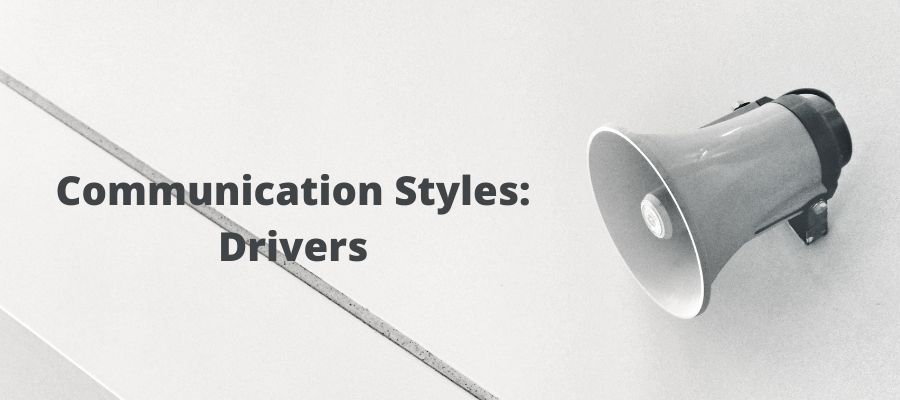Competent about Communication Styles? (All about those Drivers!)
In the previous post, we highlighted the characteristics, strengths, and weaknesses of 4 communication styles from the Boltons’ People Styles at Work and Beyond, 2nd Edition: Drivers, Expressives, Analyticals, and Amiables. If you haven’t yet identified your communication style profile, go back and read the first post, “Competent about Communication Styles?” to determine your communication style and the style of those you work with. Today we’re going to show you how to change your communication to best communicate with others. I love this part! This is how we create positive, tangible change. It’s a win for us and a win for our organizations. Read on to see how the Driver communication style can adapt to Expressives, Analysticals, and Amiables. Stay tuned and read future posts to see how other communication styles can adapt to each other for more effective communicative interactions.
How DRIVERS can adapt to EXPRESSIVES


1. Make personal contact: don’t seem aloof, be more casual and informal than usual, touch base personally, look for opportunities for conversations that are not task-related
2. Focus more on feelings: be aware of what the Expressive is feeling, acknowledge the Expressive’s feelings, show more feelings yourself, demonstrate more enthusiasm
3. Cooperate with the Expressive’s conversational spontaneity: allow enough time for the conversation, spend time in mutual exploration of ideas, be patient with overstatements
4. Be open to the Expressive’s fun-loving side: be relaxed about a certain amount of fooling around, try to create a more pleasant atmosphere for your conversation
5. Give the Expressive recognition: show appreciation for the Expressive’s contribution, let the Expressive be in the spotlight
6. Communicate on the Expressive’s Wavelength: summarize face-to-face communication in writing, try to support the Expressive’s vision, demonstrate concern about the human side
7. Provide Considerable Freedom: help Expressives put their personal stamp on what they do, empower Expressive to do new things, avoid power struggles
How DRIVERS can adapt to ANALYTICALS

1. Slow your pace: talk slower, take time to be more thorough
2. Listen more, listen better: talk less, provide more and longer pauses to make it easier for the Analytical to get into the conversation, reflect back the essence of what you hear
3. Don’t come on too strong: decrease intensity of eye contact, don’t gesture too emphatically, be more negotiable
4. Communicate on the Analytical’s wavelength: be prepared, go into detail, be prepared to listen to more than you want to know
How DRIVERS can adapt to AMIABLES

1. Make genuine personal contact: don’t seem aloof, disclose something about yourself
2. Slow your pace: talk slower, don’t create unnecessarily tight deadlines
3. Listen More, Listen Better: talk less, invite Amiables to speak, don’t interrupt
4. Don’t come on too strong: decrease vocal intensity, be more negotiable
5. Focus more on feelings: note how the other person reacts, demonstrate more feelings yourself
6. Be supportive: express sincere appreciation for the Amiable’s contributions, lend a helping hand
7. Provide Structure: make sure task is well defined and goals are clearly established, demonstrate loyalty, reduce uncertainty
8. Demonstrate interest in the human side: invite Amiables’ input, discuss effects of decisions on people and their morale
References: Bolton, B. & Grover Bolton, D. (2009). People Styles at Work and Beyond, Second Edition. New York, NY: Ridge Associates, Inc.
You’re a communication expert. Why is it often so challenging to communicate productively with colleagues and parents? Because you’re human, and effective communication, like any other acquired skill, must be explicitly learned. Check out this course:







